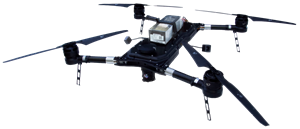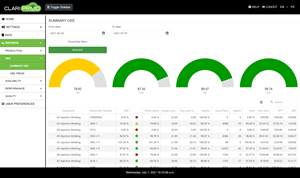Are You as Automated as You Should Be?
The world around us is changing faster than ever. Our world of plastics processing is changing as well. Going with the flow is better than getting drowned by it.
I went recently for my annual physical. I did fine (knock wood). I’ve been going to the same doctor for more than 20 years. He’s extremely competent and friendly and I’ve recommended him to others many times, but he’s not really the chatty type. However, we started gabbing about how much the medical profession has changed over the years. You probably know the deal: More questions about insurance rules and regulations, etc. etc. And technology has changed too. Not so long ago, the doors on the examination rooms had folder holders attached to them, and file folders were placed inside, containing the medical history of the patient in the room. All on paper.
Adapt or die. Automate or die. Most of us don’t like change. It can be scary. But the alternative is scarier.
Now, my doctor walks around his office, going from room to room, but with a tablet in his hands containing the medical records of all his patients. I remarked that this had to be a difficult transition for him and his team. I mean, he’s a young enough guy, so that changing from paper records to computerized records likely wasn’t all that daunting to him from a technical standpoint. Still, digitizing the paperwork of all of his many patients must have been very time consuming, at the least. We talked about that challenge for a minute.
I found his point of view to be pretty refreshing: “Adapt or die,” he told me.
Right away, I was reminded of what Robert Schad, the founder of injection machine builder and moldmaker Husky, and more recently Athena Automation Ltd., said decades ago—a mantra that still holds true today—“Automate or Die.”
Then I got back to the office to check over pages in this issue. Wow, two articles, one of them this month’s cover story, both focusing on automation. The cover story talks about the evolution of robotic controls, the other a subject that I’m ashamed to say never even dawned on me until the article came across my desk a few months ago: automation in the lab.
Then I went through my emails. I had one from a well-known thermoformer of PET packaging advising that they were adding robots to their lines. I came across a second from a Midwest molder about how they were integrating their robots with collaborative robots, also known as “cobots.” I noticed a third release from a robot supplier promoting the diversity of their product line and noting that they had 35,000 units in operation today.
I thought about an article written by Senior Editor Matt Naitove in the last issue, about a start-up additive-manufacturing company called Voodoo Manufacturing that has robots serving its 160 3D printers. Finally, I opened a press release from a builder of thermoforming machines announcing that they had developed a new robot to integrate specifically with their line of thermoforming machines for packaging.
If you attended K 2016 last year in Dusseldorf, Germany, you no doubt came across dozens and dozens of robot exhibits (if you didn’t I suggest you check out Naitove’s report in our March issue). You’ll see further automation developments for sure next May in Orlando at NPE 2018. And check out the March 2017 issue (either in print or on PTonline.com) to read the results of our 2017 benchmarking study, which we call World Class Processors. In it, Senior Editor Tony Deligio points out that one consistent feature of the cream of the crop among injection molders is that they all have “a keen understanding of the role technology can play in their success.”
What am I getting at? To say simply that the world of manufacturing has changed would be a gross understatement. It is evolving rapidly, and if you haven’t taken the time to evaluate automation in your plant, best to do so. Now. Because in the time between when this article is sent to the printer and when it reaches your hands, industry will have changed some more. Adapt or die. Automate or die. Most of us don’t like change. It can be scary. But the alternative is scarier.
Related Content
NPE2024 Wrap-Up: Sustainability Dominates Show Floor News
Across all process types, sustainability was a big theme at NPE2024. But there was plenty to see in automation and artificial intelligence as well.
Read MoreBoston Dynamics Stretches Into Autonomous Warehouse Robotics
The robotics company’s second commercial product is designed to take on physically challenging warehouse tasks.
Read MoreDrones and Injection Molding Ready for Takeoff
Drones and unmanned aerial vehicles (UAV) are approaching an inflection point where their production volumes — and functionality — will increasingly point to injection molding.
Read MoreReal-Time Production Monitoring as Automation
As an injection molder, Windmill Plastics sought an economical production monitoring system that could help it keep tabs on its shop floor. It’s now selling the “very focused” digital supervisor it created, automating many formerly manual tasks.
Read MoreRead Next
Armed with a fleet of MakerBot 3D printers and its own proprietary software, Voodoo Mfg. is producing parts by the thousands from its small Brooklyn facility.
Lead the Conversation, Change the Conversation
Coverage of single-use plastics can be both misleading and demoralizing. Here are 10 tips for changing the perception of the plastics industry at your company and in your community.
Read MoreBeyond Prototypes: 8 Ways the Plastics Industry Is Using 3D Printing
Plastics processors are finding applications for 3D printing around the plant and across the supply chain. Here are 8 examples to look for at NPE2024.
Read More









